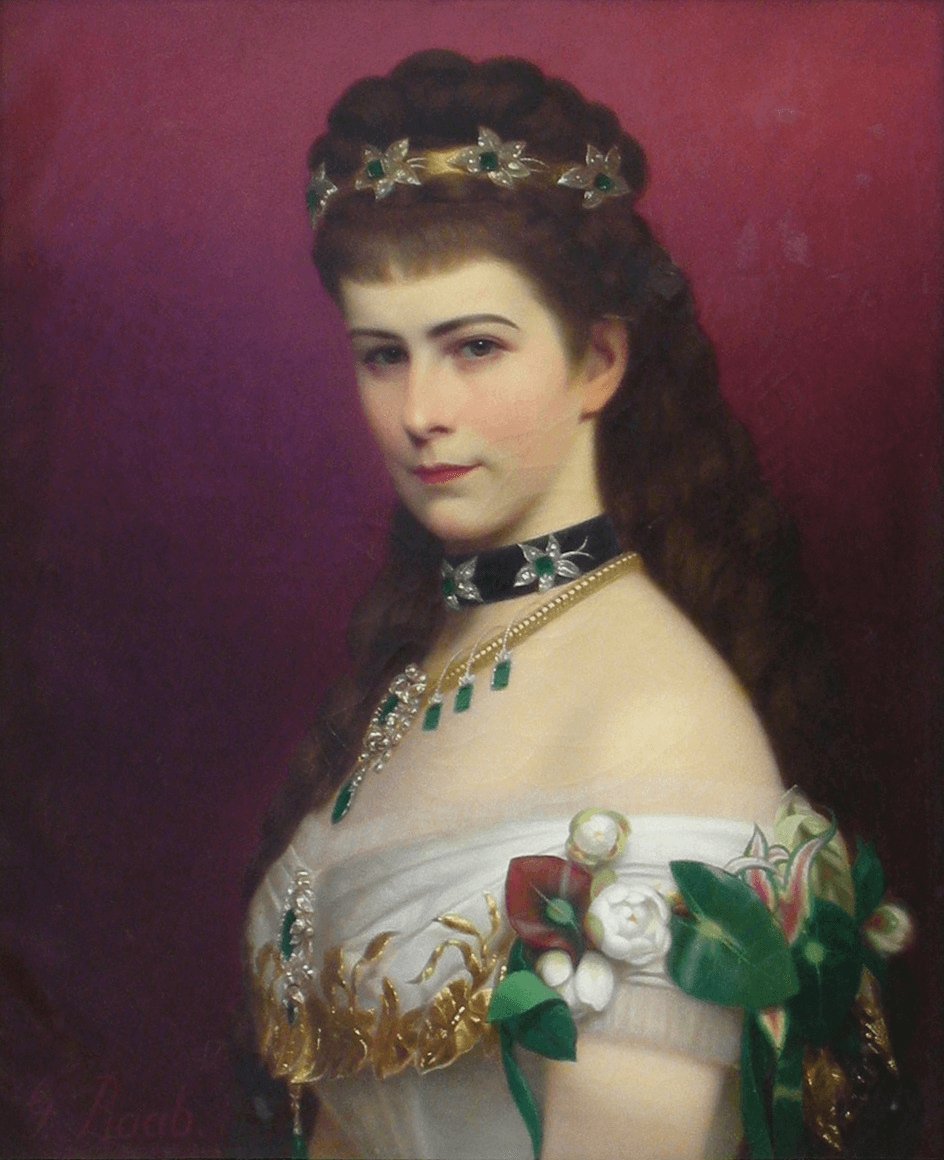Tudor Dress, what did the Tudor Queens wear
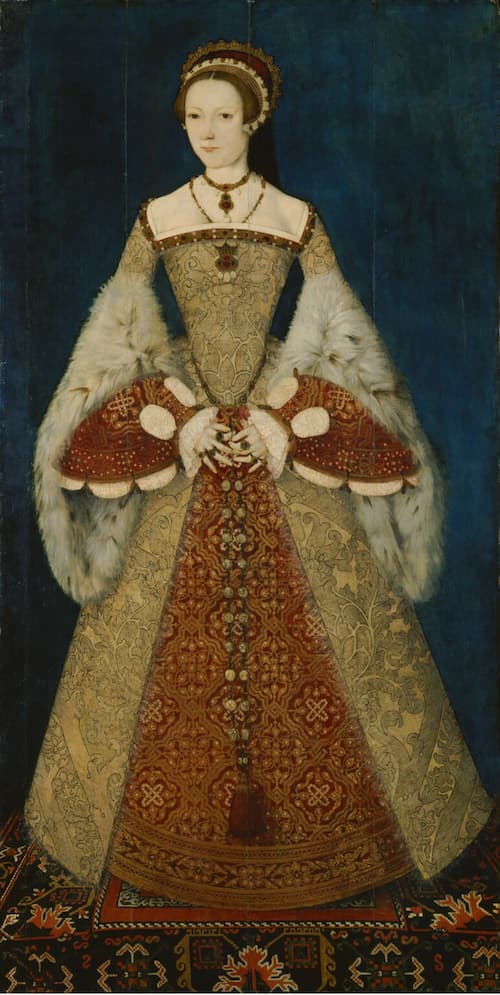 Catherine Parr, the sixth wife of Henry VIII, the one that survived! Portrait by Master John
Catherine Parr, the sixth wife of Henry VIII, the one that survived! Portrait by Master JohnRenaissance Costumes and Medieval Clothing
The Tudor dress that the women at the court of Henry VIII and Elisabeth I would wear consisted of at least five layers of clothing. All layers are of exquisite quality fabrics. To make sure that everyone can see this, somehow all layers are visible, one way or another.
Let's respectfully undress Elizabeth Tudor as a Princess, painted by an unknown artist, to see what she is wearing.
DISCLOSURE: I get commissions for purchases made through some of the links in this article.
Unveiling the Hidden Layers of Princess Elizabeth's Tudor Gown
Details of the necklines and cuffs that show bits of the linen chemise.
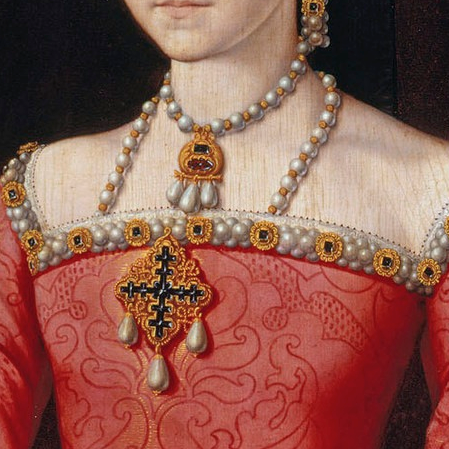

 |
The ChemiseThe first layer a Tudor Lady wears is the Chemise or Smock. She does not wear knickers or a bra. She does wear stockings made of wool, linen, cloth, or silk, depending on status and the weather. The stockings are held up by a garter. The chemise was made of linen. The necklines and cuffs could be exquisitely embroidered. To show off one's linen, these parts would be visible peeking out from under the upper dress. The neckline was usually square in shape, as was the neckline of the robe. |
Spanish Farthingale
The Spanish Farthingale was next. This bell-shaped hoop-skirt was worn under the dress. The hoops in the Farthingale were made of whalebone in Tudor times. Catherine of Aragon brought this fashion into England when she married Prince Arthur in 1509.
The Farthingale was made of wool, linen or cotton and often coloured. The colour red was popular, because that colour was associated with health.

 Kirtle and girdle
Kirtle and girdle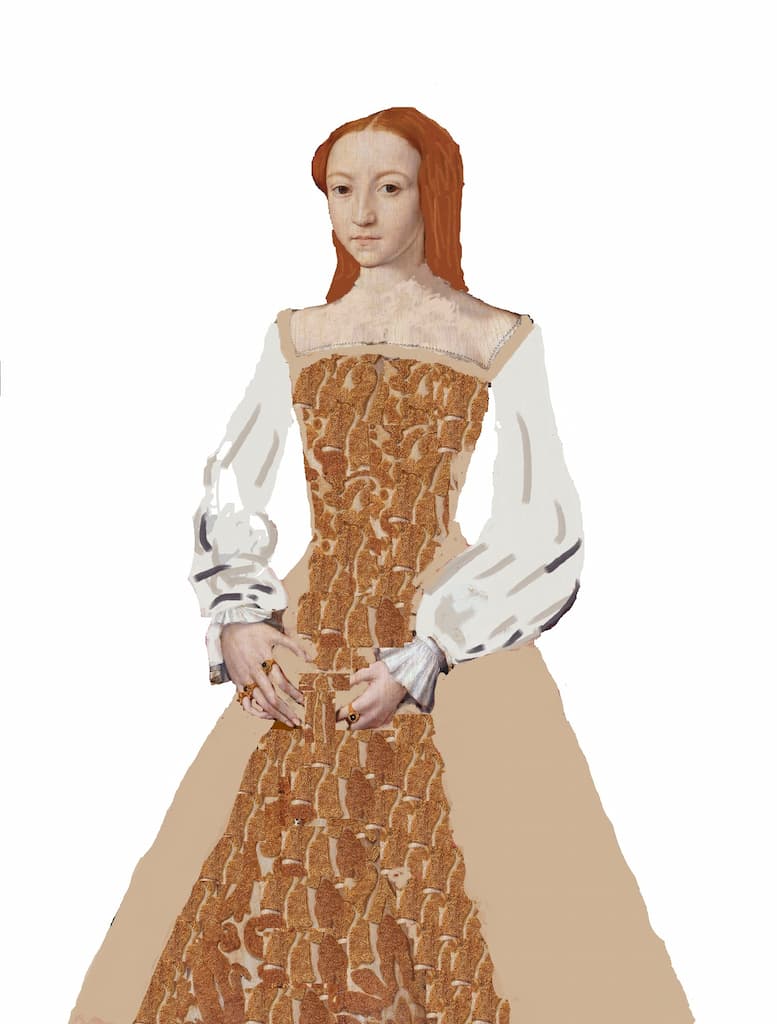
The Gown
The next layer is the gown. This piece is entirely visible so must be of sumptuous fabrics like velvet, damasks or Cloth of Gold.
The gown is laced shut in the back. The neckline is heavily embroidered and sometimes jewelled. The neckline of the chemise is just peeking out underneath the gown.
The skirt is open in the front, showing the kirtle dress underneath. To top it of a fabric or chain girdle is put around the waist. These girdles were sometimes scented, and you could conveniently hang a small prayer book on it.
the Kirtle
Now comes the Kirtle, a one-piece garment with a stiffened bodice. The Tudor lady does not wear a corset.
The bodice of the kirtle is shaped with Buckram to support the bust and shaped the upper body in the desired silhouette. The cleavage that you see in many movies about Tudor times is not authentic. In fact, the bodice compressed the breasts and flattened them.
The kirtle was often partly visible, so luxurious fabrics were used.
Commoners would stop dressing here and wear the kirtle as a basic dress.

 Fore-sleeves were separate stand-alone pieces of a Tudor outfit
Fore-sleeves were separate stand-alone pieces of a Tudor outfit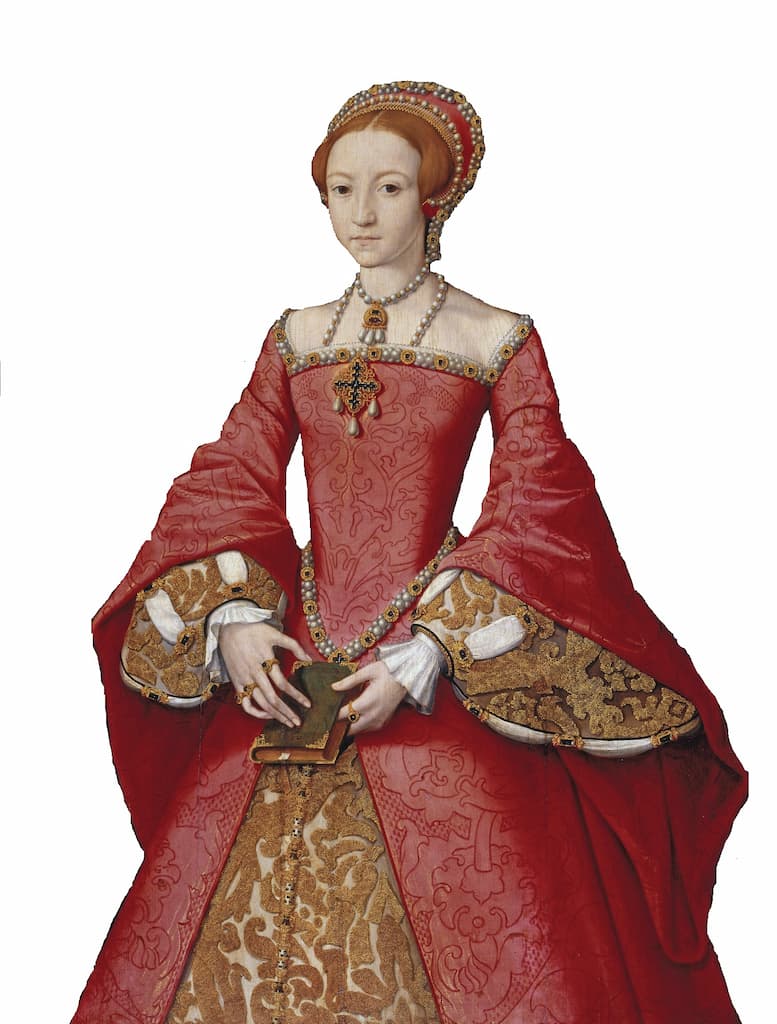
Fake sleeves and jewellery
You thought we were almost done, but there was something missing in the picture above.
In Tudor times the fashion was for huge sleeves with fore-sleeves appearing from underneath them.
These fore-sleeves were separate stand-alone pieces of the outfit. Sleeves could be worn with different gowns, but in this example, it seems the match the embroidery of the kirtle.
Note the gaps in the sleeves, that allow for the chemise to be visible again.
Of course, the outfit was not complete without some priceless pieces of jewels.
French hood
English women preferred the English hood, so Elisabeth I is very fashionable wearing a French hood in this painting. The French hood is a round coif, covering most of the hair and ears. Attached is a veil that is almost always black, which covers the back of the head.
Because the French hood showed the front part of the hair, the more conservative ladies at court thought it was pretty scandalous to wear it.
The English hood
Older, or old-fashioned women would wear the English hood or gable hood. From the back two tube-shaped veils hang out, which could be pinned up in various headdresses.
This hood would cover all the hair, explaining why the revealing French hood was found frivolous.
The English hood was only fashionable at the English court (hence the name..).
 Elisabeth I as a princess, wearing a French hood
Elisabeth I as a princess, wearing a French hood Jane Seymour, wearing an English Hood
Jane Seymour, wearing an English Hood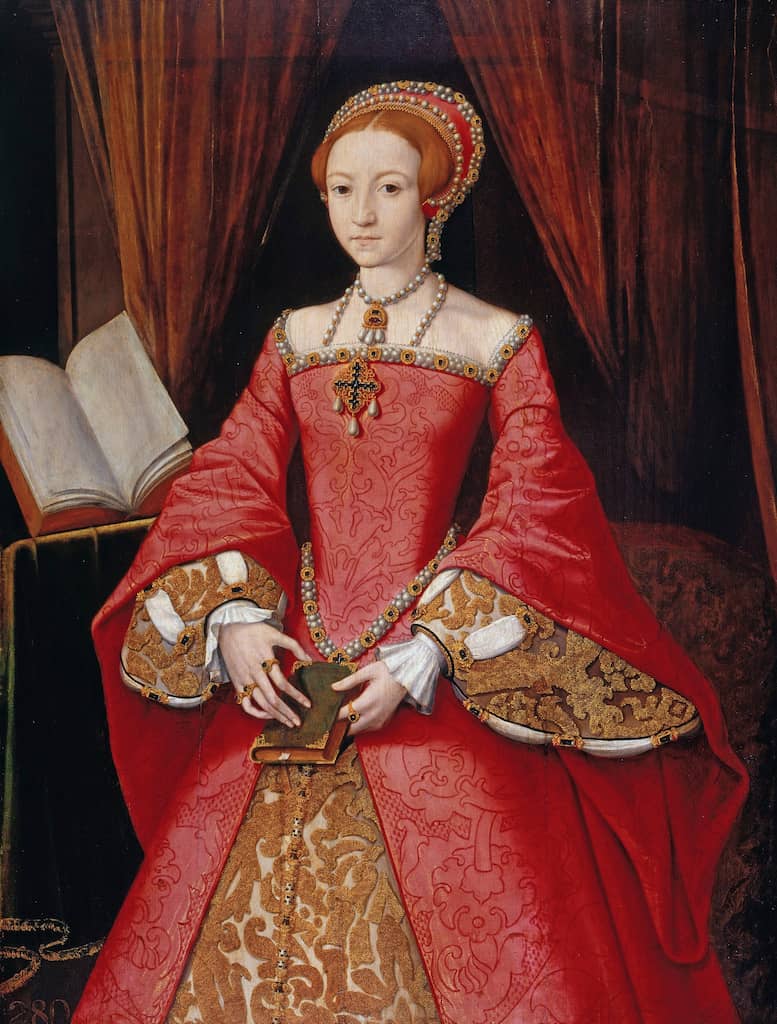 Elisabeth I when still a Princess
Elisabeth I when still a Princess Catherine Howard
Catherine Howard Margaret Tudor
Margaret TudorFind your Tudor dress here; look as gorgeous as Queen Elisabeth I, or dress up as Anne Boleyn!
Your best chance to find a Tudor dress that looks remotely like the originals is to shop on Etsy.com . You can find tailor-made Tudor dresses there that look gorgeous and are made to look like the originals.
These Tudor dresses I found on Amazon.com and Aliexpress. Most are not very accurate, but overall it looks gorgeous! And the bright side, they are much cheaper!










